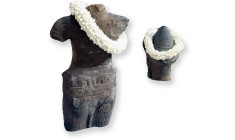Smoke and mirrors
Brodie, N. (2006) ‘Smoke and mirrors’, in E. Robson, L. Treadwell and C. Gosden (eds) Who Owns Objects? Oxford: Oxbow, pp. 1–14.
All parties with an interest of one sort or another in the antiquities trade agree that it causes a certain amount of damage to the world’s archaeological heritage. Unfortunately, they cannot agree just how serious that damage is.Proponents of the trade argue that most archaeological material appearing on the market is from old collections or has been found by chance, and that therefore the damage ca used is minimal. Trade sceptics counter that most material is not from old collections at all, but has in fact been recently looted from archaeological sites. It would seem a sensible proposition to sit all parties down around a table and ask them to establish the nature and scale of the problem, to decide whether the problem is severe enough to require ameliorating intervention, and, if so, to agree regulative, fiscal, administrative and ethical policies that would protect archaeological sites from illegal excavation, facilitate a legitimate antiquities trade, guarantee the survival of chance finds, and allow private individuals and museums the freedom to build up their archaeological collections. It is a seductive proposition that promises a productive compromise, but unfortunately it is one that I consider to be illusory, and in what follows I will set out my reasons for thinking that way. I consider what conditions are necessary for an open public debate over the antiquities trade to proceed, and make explicit my implicit premise that such conditions do not currently exist. I show that the fundamental problem is lack of transparency – it is extremely difficult to obtain any reliable information about how the antiquities trade actually operates. A secondary but related problem is lack of trust – statements of fact made by the trade community are usually made without any evidential support and so can rarely be verified, and in consequence are not usually trusted.
